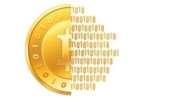 For those who believe that bitcoin, or some virtual currency akin to bitcoin, represents the future of human money, the latest news is … well, ambivalent.
For those who believe that bitcoin, or some virtual currency akin to bitcoin, represents the future of human money, the latest news is … well, ambivalent.
Although bitcoins themselves are intangible – they are strings of 1s and 0s – the bitcoin market has and requires the support of a large and quite tangible infrastructure, that is, “mines.” Bitcoins are “mined” as computers solve complex mathematical problems, adding to the crypto money supply.
Fire in Thailand
Last month, the hardware at a large bitcoin-mining facility in Thailand caught fire. The fire spread at the five-megawatt institution quite quickly, feeding according to one report on “a flammable acoustic foam.” Fortunately, it appears that no one was hurt.
The effect on the whole Bitcoin ecosystem, nonetheless, has been substantial.
Source: Quartz.com, November 8, 2014.
Much of the appeal of the bitcoin system consists in the fact that its protocol limits the number of coins that can be made. This is after analogy with the geological facts at work in the precious-metals world.
There exists only a certain amount of the element AU on or in the planet, for example, and this creates an upper bound of the amount of ‘money’ in any hypothetical system in which gold simply is money, or in those systems that operated in the recent past and may again in which gold was considered an essential backing of money. Mining of gold doesn’t increase the amount of the stuff, but only moves it into human hands. Furthermore (and another key point in the analogy) the successes of the mining industry yesterday make today’s job more difficult, and its successes today will make life for tomorrow’s miners more difficult still.
Bitcoin was established to mimic that situation, in contrast to the fiat creation of currency by governments and their central banks in nation states. In the bitcoin world, then, the notion of a humble cowpoke mining the stuff with that computer in his basement has become quaint – as quaint as the image of the 19th century prospectors headed out to California. Mining requires ever larger chunks of computing power, and thus of electricity, and thus of heat. Any serious mining operation has to take precautions against fire, which is after all a well-known risk of heating things up.
Meanwhile …
Software Advice has issued a report on the readiness of small and medium-sized business (SMBs) to embrace bitcoin transactions. It surveyed SMB bookkeepers to decide whether companies were prepared for it, and it has decided that a lot of work must yet be done in this area. Only 12% of the SMB representatives surveyed thought they are “ahead of the curve.” Another 22% and 17% said they were “very prepared” or “moderately prepared” respectively.
That leaves 50% who saw themselves as either minimally or not at all prepared for such transactions.
Adapted from graph in Software Advice: SMB readiness for Digital Payments and Currency
These accountants were also asked how they were fixed to deal with the taxation issues raised by such transactions. Thirty-nine percent said: not at all.
From the consumer side, 55% of those surveyed say they aren’t using any sort of digital payment system at present. If you want good things for cryptocurrencies, you’ll want that number to shrink. Bitcoin is akin to a display tent within a King Richard’s Faire. Only those consumers who are using some sort of system are even on the fairgrounds, and in a position to enter into bitcoin’s tent.
Among those consumers actually on the fairgrounds, the sort of system in use differs. But, as you can see above, Paypal is the most frequently used such system. And Paypal recently announced that it will accept bitcoins.
Fraud
Our third and final bit or byte of news: U.S. Attorney Preet Bharara has filed a complaint against a Texan, Trendon Shavers, alleging that Shavers used bitcoins for some very traditional sorts of financial crime.
Shavers raised three-quarters of a million bitcoins as investments in a business he grandly called the Bitcoin Savings & Trust. According to Bharara, it wasn’t exactly a Bailey family sort of operation, name notwithstanding. It was a bitcoin-world Madoffian operation, with the money from the latter investors used to pay interest to the earlier investors, and with the resulting flow used to support Shavers’ own day trading.
Well, at least it was small time compared to Madoff. The bitcoins raised amount to “$4.5 million based on the average price of Bitcoin during the period of the scheme,” says the U.S. Attorney’s press release.
[Shavers of course is entitled to due process of law and Bharara has yet to produce his case.]
The only common inference one may draw from all three of these nuggets is that the bitcoin world is a microcosm of the dollar-based world. It is still a “micro,” but a full “cosm” nonetheless. And it contains everything that comes with the financial world: dependence on fallible physical structures, unused opportunities for businesses and consumers, and even – sadly – the human temptations too which some in the field will succumb.



